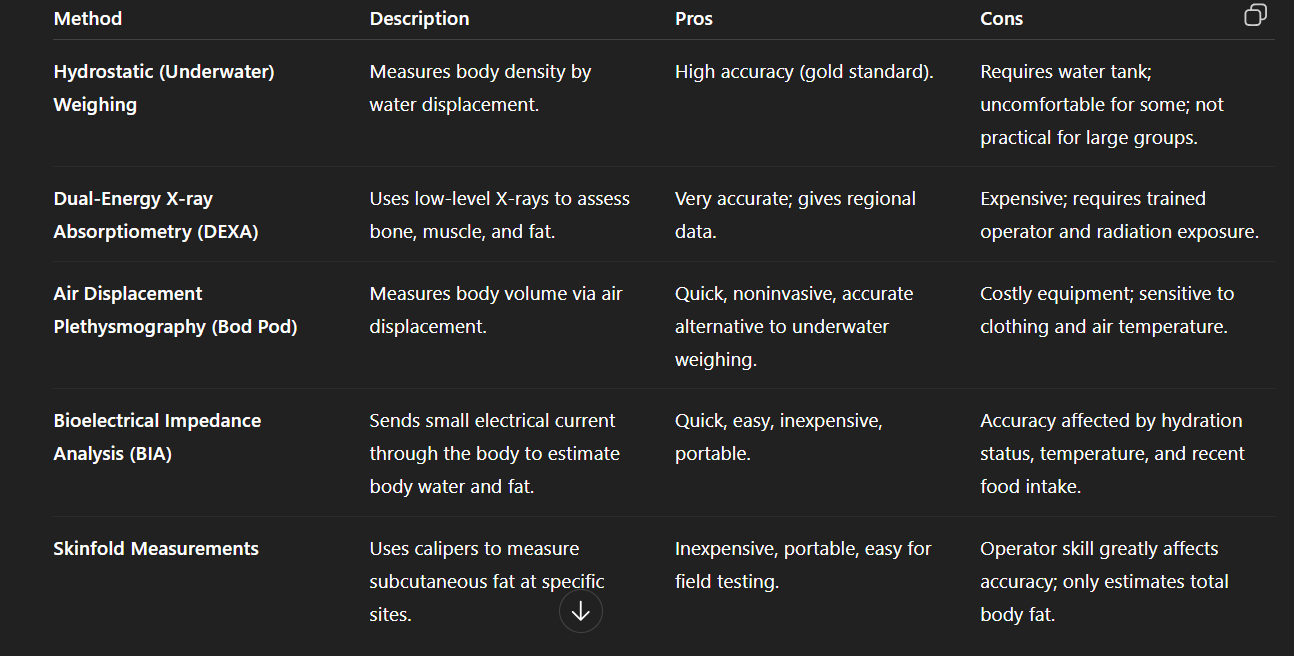Body Composition
1/6
There's no tags or description
Looks like no tags are added yet.
Name | Mastery | Learn | Test | Matching | Spaced |
|---|
No study sessions yet.
7 Terms
Define body composition
Body composition refers to the proportion of fat mass (FM) and fat-free mass (FFM) in the body.
Fat mass includes essential and storage fat.
Fat-free mass includes muscles, bones, organs, water, and connective tissue.
It provides a more detailed picture of physical health than body weight alone.
Why do we study body composition?
To assess health status and disease risk (e.g., obesity, cardiovascular disease, metabolic disorders).
To evaluate the effectiveness of exercise, nutrition, or rehabilitation programs.
To monitor changes in muscle and fat mass over time.
To help set realistic fitness goals based on composition rather than scale weight.
Health implication related to body composition
High body fat percentage increases risk for:
Hypertension, diabetes, cardiovascular disease, joint stress, and metabolic syndrome.
Low body fat percentage can lead to:
Hormonal imbalance, reduced immune function, nutrient deficiencies, and decreased performance.
Maintaining a healthy range supports cardiovascular, hormonal, and metabolic health.
Know the different techniques for measuring body composition cons and pros

Know how to calculate an estimation of goal body weight
Steps:
Determine current fat-free mass (FFM) = current body weight × (1 - current % body fat).
Plug FFM into formula with desired % body fat.
Example:
If someone weighs 180 lbs at 25% body fat, and wants to reach 15%:
FFM = 180 × (1 - 0.25) = 135 lbs
Goal BW = 135 / (1 - 0.15) = 158.8 lbs
Goal weight ≈ 159 lbs

How does body composition relate to posture?
Excess adiposity (body fat) can shift the center of gravity (COG) forward or backward, leading to postural deviations such as anterior pelvic tilt or increased lumbar lordosis.
Insufficient muscle mass can reduce core stability and postural endurance.
Balanced composition—adequate lean mass and moderate fat—supports optimal alignment, spinal stability, and movement efficiency.
Functional implication related to body composition
Excess fat can impair movement efficiency, endurance, and joint stability.
Adequate lean mass supports strength, balance, posture, and daily functional movement.
In athletes, optimal composition enhances power-to-weight ratio, speed, and agility.